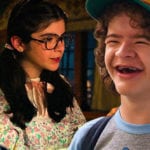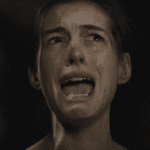 Technology
Technology  Technology
Technology  Humans
Humans 10 Everyday Human Behaviors That Are Actually Survival Instincts
 Animals
Animals 10 Animals That Humiliated and Harmed Historical Leaders
 History
History 10 Most Influential Protests in Modern History
 Creepy
Creepy 10 More Representations of Death from Myth, Legend, and Folktale
 Technology
Technology 10 Scientific Breakthroughs of 2025 That’ll Change Everything
 Our World
Our World 10 Ways Icelandic Culture Makes Other Countries Look Boring
 Misconceptions
Misconceptions 10 Common Misconceptions About the Victorian Era
 Mysteries
Mysteries 10 Strange Unexplained Mysteries of 2025
 Miscellaneous
Miscellaneous 10 of History’s Most Bell-Ringing Finishing Moves
 Technology
Technology Top 10 Everyday Tech Buzzwords That Hide a Darker Past
 Humans
Humans 10 Everyday Human Behaviors That Are Actually Survival Instincts
 Animals
Animals 10 Animals That Humiliated and Harmed Historical Leaders
Who's Behind Listverse?

Jamie Frater
Head Editor
Jamie founded Listverse due to an insatiable desire to share fascinating, obscure, and bizarre facts. He has been a guest speaker on numerous national radio and television stations and is a five time published author.
More About Us History
History 10 Most Influential Protests in Modern History
 Creepy
Creepy 10 More Representations of Death from Myth, Legend, and Folktale
 Technology
Technology 10 Scientific Breakthroughs of 2025 That’ll Change Everything
 Our World
Our World 10 Ways Icelandic Culture Makes Other Countries Look Boring
 Misconceptions
Misconceptions 10 Common Misconceptions About the Victorian Era
 Mysteries
Mysteries 10 Strange Unexplained Mysteries of 2025
 Miscellaneous
Miscellaneous 10 of History’s Most Bell-Ringing Finishing Moves
10 Great Scenes in Musical History
After the surprising success of my first list (by which I mean it wasn’t immediately tossed onto the virtual slush pile), I felt inspired to write another. This list focuses on some of the best-loved scenes in musical theater history, and covers roughly sixty-six years. Needless to say, it’s difficult to compound six decades into 5000-odd words, but one tries.
Unlike in my last list, not all of the musicals these scenes are from were successful or memorable, but the scenes themselves are classic, innovative or showcase great talent. I’ve been confident enough to go into far more detail this time around, though I’ve also tried to make certain not to repeat anything that was already visited in the last list. I can assure you that my misguided enthusiasm for musicals is sufficient to fill two lists. Perhaps three. Hmmm.
A perennial classic, Singin’ in the Rain produced a star in 19-year-old Debbie Reynolds, while further cementing the brilliance of Gene Kelly. It also produced his co-star Donald O’ Connor’s most memorable and popular dance sequence, “Make ‘Em Laugh,” where he showcased his strenuous, acrobatic dancing abilities. The scene has been recreated many times since, on shows like Glee (regrettably), and the Oscars.
But the scene that is most famous is undoubtedly the title song, because of the unforgettable image it conveys of Gene Kelly, umbrella in hand, dancing in the rain. It’s hard to pick what will become an instant classic, but since its inception, this scene has been recreated, honored, referenced and spoofed more times than perhaps any other scene in cinema. It was also remixed quite recently in a remarkable Volkswagen advertisement.
One of the most captivating things about this scene is how polished and strictly choreographed it seems, while behind the scenes it was anything but. Many people are aware of the story of Gene Kelly being extremely ill while shooting this scene. Refusing to leave the set until he could run through the scene at least once, the legend is that it was shot in one take, with very limited blocking. The notion of such a classic piece of cinema being created in one cursory take is very romantic and has captured the imaginations of actors and audiences alike since.
The rain itself was made of water and milk in order to make it thicker and more visible on screen. The tapping of Gene’s shoes was also dubbed later, and this was also done to much of Debbie Reynolds’ tapping in the film. Despite these clunky technical details, the viewer would never know what effort had been made to make the scene work. The song, paired with Gene Kelly’s undeniable talent, created a classic scene in cinema, and one of the greatest in dancing history.
While not a particularly great example of either Marilyn Monroe or Jane Russell’s best singing or dancing, this song was the opening scene in Gentlemen Prefer Blondes, the film that launched Marilyn Monroe to stardom. Marilyn had appeared in a few successful movies before this production, such as Monkey Business (1952) and Niagara (1953), but it wasn’t until Gentlemen Prefer Blondes that she garnered widespread attention. At this time, she was still considered a less famous actress than Jane Russell, and her name is therefore billed below Jane’s in the opening credits.
By the time Gentlemen was filmed, she had modeled a persona of smoldering sex appeal, wrapped in an almost naive, wide-eyed innocence. Marilyn was reputedly told during the filming of Gentlemen that she needed to tone down this sexual magnetism, which could sometimes become a little too intense for the sweet, likable (though slightly conniving) role that she was playing (Jane Russell was reputedly told to tone it up). However, she was just beginning to strike a chord with the movie-going public with this calculating sexuality, and it remained a popular aspect of her acting.
In this famous scene we are introduced to Jane Russell and Marilyn Monroe’s characters in dazzling Technicolor. It was only the second time the audience had heard Marilyn sing, (the first was in a 1948 B movie called Ladies of the Chorus) and one of the early glimpses of her with the platinum blonde locks that were to become her signature (before Monkey Business, she’d tried several different shades of blonde; in Don’t Bother To Knock (1952) her hair is more a yellowy, golden shade than the white-blonde we’re familiar with).
It must have been clear to moviegoers, when they saw this blonde bombshell explode onto the stage in her flashy red sequins, that they were watching a true star, a woman of unfathomable beauty, and sadly underrated talent. She easily keeps up with her more experienced co-star, and flaunts the breathy, dreamy singing voice that was to become one of her famous trademarks.
Throughout her quite short career, Marilyn was usually typecast as beautiful but idiotic sexpots. Despite this on-screen persona, she had a deep interest in psychoanalysis, very liberal beliefs (especially about equal rights), and was said by third husband (and writer of the play The Crucible), Arthur Miller, to be a devoted buyer of books. There is a recurring rumor that she had an IQ of over 160, which, if true, would make her much more than averagely intelligent. Certainly much more intelligent than a certain American president she’s rumored to have romanced on the sly. But the ‘IQ rumor’ is just one of many that continued to surface in the years after Marilyn’s death, some more controversial than others. Her often very shrewd remarks suggest that she was far from unintelligent, once quipping: “Speaking of Oscars, I would win overwhelmingly if the Academy gave an Oscar for faking orgasms. I have done some of my best acting convincing my partners I was in the throes of ecstasy.”
However, she could never quite fight the frequent typecasting, though she managed to deviate from her blonde ditz role in a few of her movies, like Niagara, Bus Stop (1956), and The Misfits (1961). Despite her success, Marilyn’s life was also very troubled. Towards the end of her life she was very ill, and suffered two miscarriages. Throughout her life, she suffered from depression and spells of wild self-destruction. She would turn up to filming late, dazed, addled by pills, and sometimes wouldn’t turn up at all. She was widely blasted as being a nightmare to work with, because of her unprofessional behavior and problems with alcohol and drugs.
One of these instants was on the set of The Prince and the Showgirl (1957) where esteemed actor Laurence Olivier frequently attacked Marilyn for her tardiness and for forgetting her lines. Marilyn felt she was made to feel inadequate and undesirable by the English great (though after her death he would express his distaste for how she was ruthlessly exploited by the industry). But she also recounted, more light-heartedly, of how she had appeased him when, one day, he had “given her hell” about “screwing up”: “I soothed him by telling him I thought his Hamlet (1948) was one of the greatest films ever made. You know he won an Oscar for it.”
This scene, from the movie The Band Wagon, is a small slice from the movie’s climax. The movie centers on languishing Hollywood actor Tony Hunter (Fred Astaire), who feels his star is waning and that his fame is drying up. He’s persuaded into starring in a light-hearted musical that his two writer friends have created. They misguidedly employ Jeffrey Cordova (Jack Buchanan), an actor and director with numerous shows running simultaneously on Broadway, to help in the production.
Melodramatic, and slightly pretentious, Cordova immediately turns the quaint musical into a stormy drama, complete with complex mechanical sets that eventually malfunction and ruin the premiere of the show. He also employs the statuesque ballet dancer Gabrielle Gerard (Cyd Charisse) to star beside Tony. The two initially clash, but come together in the end to make the show a success.
After Cordova’s production collapses, Tony convinces him to revert back to his friends’ original songs. These include a montage titled “Girl Hunt,” which is a spoof of crime fiction and the “hardboiled” detectives that often appear in it. In this scene, Fred Astaire’s character plays a gruff detective on the hunt for the tormenters of a delicate blonde, played by Cyd Charisse’s character Gabrielle. Gabrielle also plays a sultry, “dangerous” brunette, who attempts to seduce the detective.
Cyd Charisse and Fred Astaire were both extraordinary dancers, as this scene undoubtedly shows. Cyd Charisse was, literally, bred to be a dancer and held it in esteem over even acting. Her legs were insured for $5 million, and she is one of the few women to have danced with both Fred Astaire and Gene Kelly, others include Rita Hayworth, Debbie Reynolds, and Judy Garland.
Fred Astaire was known for his incredible grace, his perfectionism and lightness of foot. Gene Kelly was often noted for his vigor and strength, while Fred Astaire was more precise, and sometimes considered more coordinated. However, even Cyd Charisse herself stayed very diplomatic on the matter, commenting in her autobiography: “It’s like comparing apples and oranges. They’re both delicious.”
To jump forward some sixteen years, Sweet Charity was not lucky enough to be born in the 1950s, where questionable plots and sweet-to-a-fault heroines were generally forgiven if the musical numbers successfully atoned for it. Sweet Charity starred dancer, singer and actor Shirley MacLaine, who took one of the film’s songs “If My Friends Could See Me Now” as her trademark.
The film also carries another perennial favorite, “Hey, Big Spender.” The film itself follows the misadventures of Charity Hope Valentine (I told you she was sweet), a naive dancer-for-hire, aka prostitute. Despite being constantly taken advantage of in life and falling on hard times, she remains hopeful. Her dreams seem to have come true when she leaves the seedy dance hall she works in, and meets Oscar Lindquist (John McMartin), who seems to be understanding of her ex-profession, though he later struggles with the idea.
Made in the late ’60s, this musical could dare to tackle issues that earlier musicals couldn’t. Prostitution was often hinted at in movies in the ’30s, ’40s and ’50s, as was sexual promiscuity (Bette Davis’s Jezebel (1938), and Joan Crawford’s The Damned Don’t Cry (1950) spring to mind), but the morally dubious women was usually ultimately punished by humiliation or heartbreak, or were killed off (Bette Davis’s 1931 Waterloo Bridge is an example of the latter).
Sometimes sexuality was hinted at wordlessly to avoid the wrath of the censor. Cyd Charisse and Marilyn Monroe were often “victims of the censor,” meaning that they were watched closely to make sure that no inappropriate amounts of skin were shown or that they overstepped the mark when it came to their sex appeal. Cyd Charisse expressed her amusement at this attention, saying: “The censors were always there when I was on the set. When I was held up, in a lift, they were up on ladders to see if I was properly covered.”
However, in Sweet Charity Charity all but states that she sleeps with men for money, but is never shamed, or killed for her actions. How to handle this issue made even the filming of the movie quite contentious. Ross Hunter (producer of the 1967 Thoroughly Modern Millie) was originally set to be producer but dropped out due to disagreements with director Bob Fosse on how to handle the delicate matter of prostitution. Ross Hunter wasn’t known for his liking of gritty realism, so it’s possible that he didn’t wish for Charity’s profession to be mentioned at all.
Storms in teacups aside, “Rich Man’s Frug” is an exceptionally well-choreographed and jaunty scene, in which Charity accompanies a celebrity to an exclusive club, and watches the floorshow. The music number also seems to satirize the nature of celebrity and the well-to-do, creating a scene that is quite bizarre and outlandish, complete with cheetahs in cages and elaborate marble statues. The scene also practically drips with the sixties, remaining very faithful to the style and look of the time, and for that reason alone is very memorable and enjoyable to watch. You almost expect Austin Powers to walk out at any moment.
To jump forward another nine years, Grease again pushed the envelope when it came to taboo subjects. In this film, teenage sex, drinking and smoking feature strongly in the storyline (though the lyricist makes certain to mention that Sandy and Danny are “eighteen,” and therefore at least the age of consent). Rather than shy away from the facts, the musical number “Summer Nights” paints a realistic picture of a high school: the boys are almost all fascinated with sex, the girls can be petty and two-faced. There is an obvious rivalry between Sandy and Rizzo, who doesn’t share the other girls’ interest in Sandy’s summer romance with Danny, while Danny’s friends are more interested in “how far” Danny got with Sandy than anything else.
This well-loved musical was adopted from the stage and altered to fit around the fact that Olivia Newton-John was Australian (perhaps she couldn’t do a convincing American accent?), making Sandy not an all-American girl, but an Australian exchange student. Depending on the production, performances of this musical since have opted to either retain this change or not, (the production in my high school chose to keep Sandy’s Australian heritage, unsurprisingly).
The censors still sunk their teeth into the film’s many sexual references, making certain that some of the more crude references were cut. Perhaps for fear of unnecessarily baiting the censors, the producers decided against casting Harry Reems as Coach Calhoun, due to his overturned conviction for “conspiracy to distribute obscenity across state lines”, and his ties to adult movies. Stockyard Channing, who played the promiscuous Rizzo, claimed in an interview that the hickeys on her neck in one of the scenes were real, and that Jeff Conaway “insisted on applying them himself.” Though personally I think that claim more exemplifies Stockyard’s acidic wit than any unusual acting methods used.
The “Summer Nights” scene occurs early in the movie, and is arguably the best-known and best-loved of all the Grease scenes. “You’re The One That I Love” and “Greased Lightning” are also recurring and lasting favorites, but “Summer Nights” is the only song to appear in an insect repellent commercial so it clearly tops the list. It provided, in one quite brief number, a great insight into the 1950s school atmosphere that the film wanted to create. It introduced and distinguished the characters of shallow Marty, prickly Rizzo and sweet, bubbly Frenchy, and those of Danny’s womanizing “T-Bird” friends.
Olivia Newton-John showcased her strong singing voice, if not strong acting skills, while John Travolta followed up his popular role in Saturday Night Fever (1977) with an equally acclaimed role, and began a very long and successful career in film.
I am one of those soulless people who prefer the terrible 2005 remake of The Producers than the classic, groundbreaking original. I feel unclean for admitting it, but there it is. It’s Nathan Lane, and he’s fabulous, and I’m weak. But, confessions aside, this musical number is perhaps one of the most hilarious, most beautifully satirical numbers ever made. It is dripping with Mel Brooks’ rambunctious wit.
Mel Brooks felt that the best revenge we could take on Adolf Hitler, for inflicting such hatred and misery on the world, was to mock him, mercilessly, and he does. In the 1983 remake of To Be or Not To Be he appears as the fuehrer himself, asking: “What do they want from me!? I’m good-natured! I’m good-hearted! I’m good-looking!” when he discovers what the foreign newspapers are calling him, and goes on to sing that he doesn’t want war, he wants peace! A little piece of every country in Europe.
The Producers was one of his most successful and loved comedies, teaming Gene Wilder with Zero Mostel, and creating one of the funniest, most offensive numbers in musical history. Brooks later adapted the film for the stage, turning it into a musical. Nathan Lane appeared as Max Bialystock in the stage production, earning his second Tony award. His experience on the stage is perhaps why he fared better than Mathew Broderick in the remake, and is so funny as the sleazy Max Bialystock.
The 2005 remake is actually more a faithful remake of the stage musical, than the original movie, which didn’t have any of the musical numbers later written for the stage (“We Can Do It,” “Keep It Gay,” “You Never Say Good Luck On Opening Night,” “Betrayed,” etc), and differing characters to the remake. For example, in the 2005 remake Hitler is depicted as being very effeminate, while in the original he is depicted more as being a drug-addled pothead.
The film and musical both centre on Max Bialystock (incidentally, ‘Bialystock’ is also the Polish town Brooks’ ancestors lived in, and which was devastated by the Nazis during WWII), who teams up with the mousy accountant Leo Bloom to make the greatest flop in history, in the hope that the money they raise for the production will be far more than what is needed. They choose “Springtime For Hitler,” a play certain to offend people everywhere, and employ a kitschy director, the insane, Nazi-sympathizing playwright and inept actors to make sure the musical has the shortest run on Broadway in history.
Turning Nazi Germany into a stage musical is just about the most offensive thing anyone could attempt, but, with its outlandish, over-the-top insanity, “Springtime for Hitler” is nothing but brilliant in its intentional tastelessness. Both the 1968 and 2005 versions of the “Springtime for Hitler” scene strongly encompass Brook’s satirical humor, but the original has the advantage of being, well, the original. And of having Brooks dub one of the dancers’ lines (“Don’t be stupid, be a smarty. Come and join the Nazi Party!”), but in the 2005 version we watch as scantily dressed soldier women take the pins off invisible grenades with their teeth, while a blonde John Barrowman (Torchwood) dons a German uniform. It’s a tough one.
Though not necessarily a particularly memorable movie in itself, RENT did produce one truly excellent scene and that was accompanied by the song “La Vie Boheme.” Based on the stage production of the same name, RENT centers on the lives of impoverished bohemians living in New York. Among them is a filmmaker, a musician, a drug-addicted exotic dancer, a transsexual and a philosophy professor (both of whom have AIDS), and a bisexual performance artist.
It seems like a crowded and slightly bewildering premise for a musical, but RENT is not about light-hearted comedy or romance. It tackles numerous controversial issues, and centers particularly on the AIDS panic of the late 1980s and 1990s. It is also based on the Puccini opera La Boheme, which has a similar story of struggling artists and musicians.
The film is more or less a series of gritty, hard-hitting numbers, concerning numerous issues, like sexuality, and heroin addiction. The stage production fared far better than the film, winning the Tony for Best Musical, while the film suffered from that “staginess” that so often alienates audiences from musicals. Its (sometimes overwhelmingly) grim material is not enough to make up for the fact that there is very little dialogue, and some of the numbers seem awkward and unrealistic off the stage. Some of the scenes of the disheveled bohemians suddenly breaking into song are very clunky.
But, flaws aside, “La Vie Boheme” is one of the lighter, funnier numbers, providing much needed relief from the sober drama. Rather than focusing on the difficulties of the bohemians, “La Vie Boheme” embraces their various differences and takes a strong stand against convention, conservatism and prejudice. The number is jaunty and witty, taking particular aim at the bohemians’ ex-roommate Benny Coffin III (Taye Diggs), who they feel has betrayed and deserted them. Benny takes a more realistic approach to their situation, pointing out that they are starving and living in a dangerous, filthy neighborhood, but seems ruffled by the displays of sexuality and defiance.
The song also references The Wizard of Oz in the line: “Why Dorothy and Toto went over the rainbow to blow off Auntie Em. La Vie Boheme!”
In 2001, after a limited release in the United States, Moulin Rouge embarked on a slow, but sure domination of box offices worldwide. Baz Luhrmann, with his erratic, gaudy trademark, created a film of tremendous power and appeal, and took the notion of “jukebox musicals” to greater extents than any other movie had before. It referenced a huge selection of artists and music, most notably in the song “Elephant Love Melody” where a majority of the song is created out of single lyrics from famous love songs from artists like The Beatles, Whitney Houston, David Bowie, Elton John, and U2.
“El Tango De Roxanne” (based on the song “Roxanne” by The Police) takes place towards the end of the film. Christian and Satine are lovers, but the duke is aggressively pursuing Satine and makes no secret of what will occur if he discovers that Satine is being unfaithful to him. As the number begins, Satine has been coerced into spending the night with the Duke, and Christian is intensely jealous. Sitting in broody silence with the other residents of the Moulin Rouge, he takes out his rage on one of the other prostitutes, prompting her lover, the unconscious Argentinean (Jacek Koman), to retaliate against Christian, accusing him of bringing it on himself for falling in love with a woman who sells herself: “When love is for the highest bidder there can be no trust. Without trust, there is no love.”
The number is almost a throwback to ‘Golden Age’ cinema, in the way that it centers largely on traditional, partnered dancing. This was common in older musicals: “Pick Yourself Up” from Swing Time (1936),”You Were Meant for Me” from Singin’ In the Rain, “Girl Hunt” from The Band Wagon (1953) are examples, among countless others. But it seemed to lose popularity as time wore on, and became increasingly rare, perhaps because it was increasingly difficult to convince the younger, more cynical audiences of a realistic situation when a couple would sporadically burst into dance together. Contrastingly, chaotic, improvised dancing, like that in “La Vie Boheme,” is far easier to integrate.
But in Moulin Rouge, the image of the rows of couples dancing in “El Tango De Roxanne” worked spectacularly, despite the difficult task of sewing this together with the secondary plot of Satine and the Duke. It is an example of flawless musical cinema. There is no seam between the spoken dialogue and the music, it melts together perfectly.
Laced between the tango of the men and women of the Moulin Rouge, we see scenes of the Duke and Satine dining together. The Duke believes that Satine is smitten with him, and is lavishing gifts on her, but his mood soon sours when he realizes that it isn’t him that Satine is in love with.
Incidentally, the principal dancer in this scene (“Roxanne”) is played by Caroline O’ Connor, a celebrated Australian actress, best known for her role as Velma Kelly in the stage production of Chicago.
I read recently that one critic, on reviewing Chicago, had believed that “Cell Block Tango” had played out in the movie much like it had on the stage, and I can tell you that nobody who has seen both the movie and the stage production could make such a claim. The stage production is centered strongly on minimalism, and the acts are staged much like the acts of a vaudeville show, the type of show that Renee Zellweger’s character Roxie Hart desperately wants to star in.
The Ziegfeld Follies are often described as a “higher class” of the vaudeville variety shows that ran from the late 1880s to the 1930s. Vaudeville shows were made up of a wide range of acts, everything from ‘freak shows’ to song and dance. It usually had the archetypal beautiful, costume-clad chorus girls present as well. To keep with this vaudeville flavor, Chicago’s stage production presents both classic dance numbers, like “All That Jazz” and “I Can’t do it Alone,” and other performances, like the “Hungarian Disappearing Act.”
The film also kept the vaudeville flavor of some of the numbers, but was obviously able to create much more intricate, complex scenes that the stage production. Much like “El Tango De Roxanne,” where cutaway scenes of Satine and the Duke are shown, “Cell Block Tango” uses cutaway scenes of Roxy in prison to create two plots, one that is occurring in Roxy’s mind and the second that is the reality. There are other examples of this. Particularly notable is the scene when one of the imprisoned women is hanged. The hanging scene is laced between shots of a “magic act” called the “Famous Hungarian Disappearing Act”. The scene is less effective on stage, because the focus of the audience is split between watching the “disappearing act,” and the actual hanging.
The critic is correct in that, arguably, the movie’s take on the “Cell Block Tango” could have been translated to the stage, as no CGI effects were used in the scene. But it would have to be a production of Phantom of the Opera sized proportions to achieve such a feat.
Despite the added advantages of cutaway scenes (and a huge budget), the film’s take on the “Cell Block Tango” is otherwise quite simple. It is, in essence, an extremely sleek, large-scale vaudeville act. The concept involves each murderess in Cook County Jail recounting the murder she committed, using a red scarf to emulate “where the blood would have been”.
The stage production on which the movie is based is itself actually based on a movie (actually, two movies), which are in turn based on the two very public trials of two murderesses in 1920s Chicago. The story has been taken to the screen twice before, once in a silent 1927 film of the same name, and again in Roxie Hart (1942), in which Ginger Rogers (Fred Astaire’s partner of choice) appears as Roxie.
I decided to add this as a sort of extra, because it does have obvious differences to the other scenes. Most obvious is that it contains no dancing. But an oversight would certainly be made if this classic scene was omitted (yay for agent less sentences). The Wizard of Oz launched a 17 year-old Judy Garland into stardom. Before this film, she had appeared in several small, unremarkable films and it wasn’t until she performed “You Made Me Love You” at the birthday party of Clark Gable that her company MGM seemed to realize her potential.
The Wizard of Oz turned Judy into a household name, and she afterwards appeared in several successful musicals: Meet Me in St. Louis (1944), beside Fred Astaire in Easter Parade (1948), and beside Gene Kelly in The Pirate (1948). At age three, her daughter, Liza Minnelli, also appeared beside her in The Good Old Summertime (1949).
Much like Marilyn, Judy’s life was extremely troubled, and checkered by five marriages, and numerous affairs (some of her alleged lovers included Frank Sinatra, Yul Brynner, and Orson Welles), as well as several attempted suicides. She often accused MGM of making her feel inadequate about her looks and treating her badly. Like many movie figures of her time, she suffered from an alcohol problem, and a prescription drug addiction, and this may have led to her overdose and death in 1969, at age 47.
Judy is still one of the most widely recognized and celebrated actresses of all time. This status is aided by The Wizard of Oz’ enduring popularity, and the song “Over The Rainbow,” which made her a star and brought her contralto singing voice widespread admiration. The song snagged #1 on The American Film Institute’s list of the “Greatest Songs” over the past 100 years. The song’s wistful sadness is strongly associated with Judy and her ultimately tragic life.
Judy was often very open about the troubles in her life, and her words often hinted at deep unhappiness. She was quoted in the biography Judy (1999) as saying: “I wanted to believe and I tried my damnedest to believe in the rainbow that I tried to get over and couldn’t. So what? Lots of people can’t…”
Less a film than a series of individual music acts, Ziegfeld Follies boasts a slew of stars: Fred Astaire, Gene Kelly, Judy Garland, Cyd Charisse, Lucille Ball, Lena Horne, and one of the original Ziegfeld Follies girls, Fanny Brice.
The Ziegfeld Follies were lavish theatrical shows that ran from 1907 to 1937, and mostly showcased women singing, dancing, or just showing off their looks and figures. The Ziegfeld Follies were known for their extravagance. The creator, Florenz Ziegfeld Jr., conceived the idea of taking the popular vaudeville premise of unrelated musical acts and then surrounding them with grand sets and costumes. He also had scenes where beautiful women would simply pose in different ways, and called these “living pictures.”
The history of the Ziegfeld Follies is extremely interesting, and controversial, but far too long to discuss here. It provides, nonetheless, any extremely rich canvas for any film. Unfortunately, Ziegfeld Follies’ premise is fairly weak, and consists of Florenz Ziegfeld sitting in heaven and mentally conjuring up the scenes that follow. Despite this flimsy storyline, “The Babbitt and the Bromide” is truly remarkable. Side by side are two legendary dancers: Fred Astaire and Gene Kelly. It would be the only time the two would dance together in their careers, except for That’s Entertainment Part II (1976), 31 years later.
The act itself consists of a “Babbitt” and a “bromide” meeting on the street and embarking on a pointless and shallow discussion. A “Babbitt” is a, fairly obscure, word for a complacent, narrow-minded middle-class man, and a “bromide” is a word for an unoriginal or insincere figure of speech, suggesting that Fred Astaire’s character is also both of these characteristics (assuming that Astaire’s character was the bromide, I don’t think that was ever addressed). Fred Astaire’s grace and precision, Gene Kelly’s physical strength and remarkable choreography skills make for a classic, unforgettable scene.
It is also memorable because it is seen as the meeting of two geniuses, especially as the two men play themselves and not characters. They tease each other at the beginning of the scene, Gene making a reference to Fred’s frequent dance partner Ginger Rogers, and Fred doing the same to Gene’s dance partner Rita Hayworth in the 1944 movie Cover Girl.

![Top 10 Most Important Nude Scenes In Movie History [Videos] Top 10 Most Important Nude Scenes In Movie History [Videos]](https://listverse.com/wp-content/uploads/2019/09/sharonstone-150x150.jpg)






